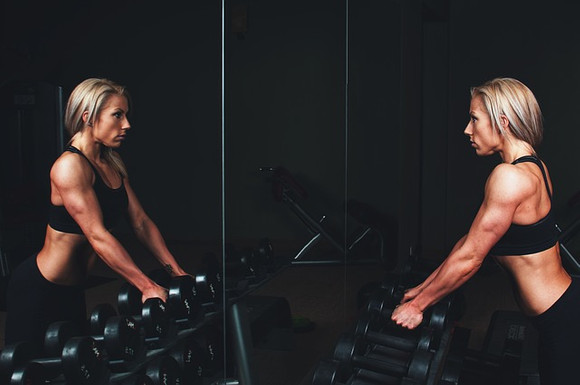If the sound of a push pull workout conjures up images of playing tug o’ war at sports days and kid’s parties, then you’re not alone. Read on to learn all about push pull training and discover the benefits of push and pull workouts for your health.
So, what are the basic principles of the push pull workout?
The name ‘push pull’ refers to the techniques you use in training. Whereas in a typical weights training session, you work muscles according to which group they fall into – such as chest and arms, legs, back, torso – in push pull training you work your muscles according to their function. One day you work the muscles that are involved in pushing; the next – you got it – you work muscles that are used to pull. In case you’re wondering, triceps, pecs, glutes and quads are some of the major muscle groups working in pushing, whilst pulling involves biceps, lats, traps and deltoids. Abs take some of the strain in both.
OK, but what are the benefits of a push pull workout for my exercise routine?
The reason push pull workouts are getting so much hype isn’t just that they sound so much more fun. Push pull workouts are actually a highly efficient form of training. You get the same results you get from a more traditional weights routine, but for less time spent in the gym. Win-win! It’s a simple concept that pays big dividends. On pull days, your push muscles are resting, and vice versa on push days – so you can work each group hard on the day knowing that they’ll be fully resting in your next session. Nice!
Train simpler

For most people, it’s going to be a whole lot simpler to think of exercises in terms of whether they are push or pull rather than memorizing all the different muscle groups and working out that way. The clue is often as not in the name: pull**ups vs** push**ups for example.** Push pull workouts make the process of working out more transparent – you don’t have to feel as though you’re learning a new language or starting a medical master, all you have to remember is whether it’s a pull day or a push day.
Can you do a push pull workout at home?
Yes and no. Whilst you can apply the basic principles of push pull training to your bodyweight resistance routine (see our article on calisthenics for example), it most commonly applies to weights training in a gym, or at least with a minimum of home gym equipment. You’ll need ideally at least some free weights and a bench, potentially also a resistance band too.
What are some examples of push exercises?
Bench press – flat, incline and decline bench
Dumbbell lateral raises: using an overhand grip, start with the weight by your side and raise your arm out and up to shoulder level. You can alternate arms or perform the exercise on both sides simultaneously.
Triceps extensions: can be performed seated or standing – raise the weight out behind you and avoid locking the elbow.
Pushups: take it to the next level by springing off your hands at the highest point of the pushup to clap before throwing your hands back out to catch the fall and return in a controlled fashion to the starting position.
Squats / jumping squats: do them holding a kettlebell out in front of you or a dumbbell in each hand by your sides. Engage core muscles before beginning.
Abs rollouts: use a barbell or ab roller and keep the movement fluid throughout.
More push exercises include the following classics: leg extensions, leg press, lunges and walking lunges, shoulder press and triceps dips.
What are some examples of pull exercises?
Chin-ups.
Barbell curls: with your hands a shoulder-width distance apart, palms facing outwards, grab the barbell and lift to the high point of your chest. Slowly, smoothly, lower it back down again. Your elbows should remain close to your sides throughout.
Pull-ups: palms facing away from you, grab the bar overhand. The distance between your hands should be more or less shoulder-width. Engage the muscles of the upper back and bring your chest up to the bar. Lower back down, keeping control smooth throughout the movement.
Lat pull-downs: pull your shoulders back and straighten through your spine. You should pull the bar down to chin level before raising smoothly back through the return movement. This exercise can also be performed at home using a resistance band.
Deadlifts: take it easy – this isn’t an exercise for beginners, and you should always start with lesser weight than you can lift on the machines. Feet hip-width apart, with the bar of the weight over your shoes, firmly grasp the bar and lift straight, to pull the weight up to hip level. You will need to set your hips back as the movement begins, to provide counter-weight.
There you have it – start incorporating the principles of push pull training into your workout today!
Did you enjoy this article? Share it!

